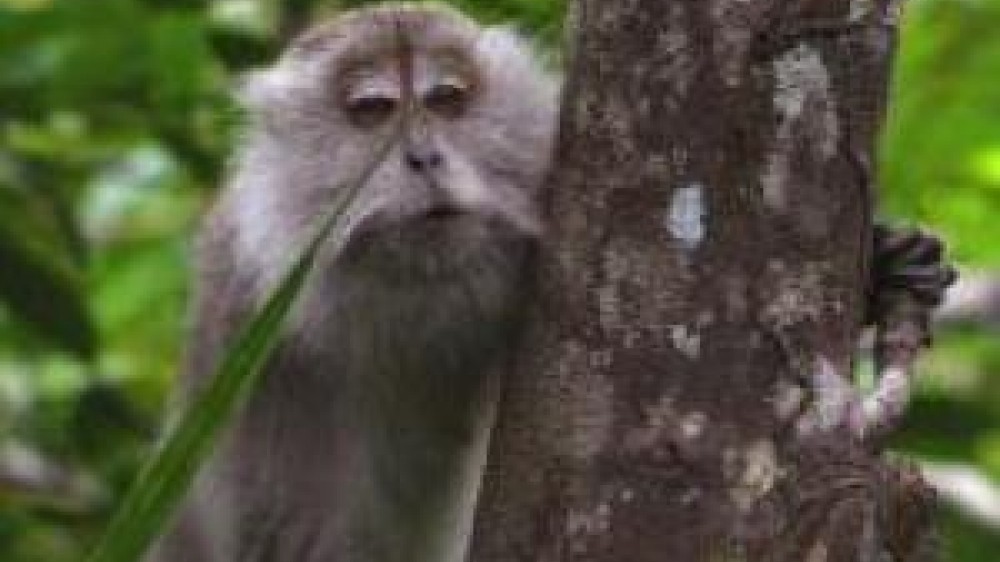A collaborative website to support macaque welfare internationally

Dr Mark Prescott, primatologist and Head of Research Management and Policy at the NC3Rs, launches our latest online resource – The Macaque Website.
I’ve worked in primatology and animal welfare for 20 years now and during that time I’ve visited primate research and breeding facilities around the world and established professional relationships with many researchers, veterinarians and animal care persons committed to doing the best they can for the monkeys in their care. This extensive network has been harnessed to develop a new website on macaque behaviour and care, which we are launching today. Creation of the site has been one of the largest and most exciting collaborations of my career, involving some 25 organisations internationally. Content development was assisted by Dr Emily Bethell and Dr Caralyn Kemp, Liverpool John Moores University.
The Macaque Website covers the life history of rhesus and cynomolgus macaques, their behaviour (such as postures, expressions, vocalisations), captive management (such as housing, enrichment, feeding, training) and tools for welfare assessment (behavioural, physiological and health indicators). It features over 200 images and videos with practical guidance, peer reviewed and referenced. The aim is not to provide a manual on macaque care and use, but instead to inspire, educate and share information to improve the welfare of these animals in laboratories worldwide.
I trained in primate behaviour and ecology – not macaques, but New World monkeys – and was lucky enough to observe my study species in the wild as well as in captivity. Most scientists using primates in research and testing, however, do not have a formal training in animal behaviour. I've encountered people and places falling short of best practice because staff lacked appropriate knowledge and skills in macaque behaviour and handling. This website can help change that.
One example that sticks in my mind is the junior researchers who insisted they must not show submissive behaviour to their macaque subjects for fear these hierarchical animals would view them as subordinates and act aggressively towards them; instead they argued, they must be forceful in their interactions and demonstrate that they are the dominant party (behaviour likely to be interpreted by the animals as aggressive). The correct response in this situation is to ignore undesirable behaviour and reward desirable behaviour, responding to affiliative signals (such as lip-smacking, which the researchers had misinterpreted) with affiliative signals.
The comprehensive behaviour section of this site has huge potential for use in laboratory staff training programmes, enabling existing and new staff to better recognise, interpret and respond appropriately to macaque communication signals, which will provide a good basis for refining many aspects of their care and use. The welfare assessment section also features a 1-hour Listen Again presentation on recording behaviour (from Professor Hannah Buchanan-Smith, University of Stirling), which will also be useful to students of animal behaviour.
Not everyone working with macaques in research has the opportunity to travel to other laboratories and to compare and contrast their set up with others; to see whether they’re ahead or behind the curve with their animal management and to gather new ideas. I know I can get frustrated when trying to explain in written correspondence during peer review of grant applications or manuscripts, or quick conversations at conferences, the improvements in housing or husbandry that I’ve been impressed with during visits to establishments which other laboratories could consider adopting. “A picture paints a thousand words” and this site illustrates some exemplary accommodation and enrichment ideas instantly. It helps to dispel some common myths – that macaques used in experiments must be housed in small, squeeze-back cages else they will be difficult to capture, that animals with head implants cannot be housed socially in enriched enclosures, and that destructible materials such as wood and cardboard are not safe as enrichment items. It demonstrates the high standards that can be achieved with sufficient awareness, will and resources. At the end of the day, there are few things important for primate welfare that genuinely conflict with the science. To assist establishments to implement what is shown on the site, we have tried to provide practical advice; for example, recipes for cheap enrichment items, and ideas for incremental improvements in caging design where resources are limited.
The field of animal welfare science is constantly evolving and new, improved methods for assessing welfare emerge. Here we pull together some of the tools that can be used to identify individuals at risk of poor welfare and to evaluate the impact of refinements in research and husbandry procedures. From body condition and alopecia scoring systems, to haemodynamic, respiratory and blood clinical chemistry reference values.
The Macaque Website has been a huge collaborative effort and a long time in the making. I’m extremely grateful to all those individuals and organisations that have provided material and given of their time to help create a superb resource to support the community to do more to improve the welfare of macaques used in research. As the audience for the website expands, we welcome feedback on the site and additional material (mark.prescott@nc3rs.org.uk).
The Macaque Website complements our earlier site on the behaviour and care of common marmosets www.marmosetcare.com, commissioned in 2010, and our primate welfare hub.
